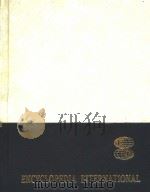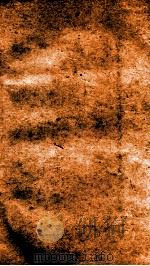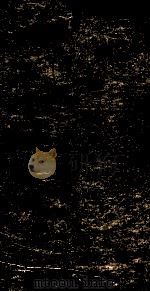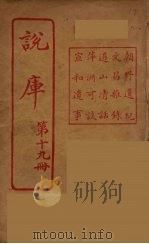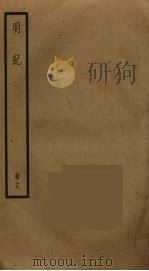《waveforms 19》
| 作者 | chance B 编者 |
|---|---|
| 出版 | mcgraw-hill book co |
| 参考页数 | 785 |
| 出版时间 | 1949(求助前请核对) 目录预览 |
| ISBN号 | 无 — 求助条款 |
| PDF编号 | 813814538(仅供预览,未存储实际文件) |
| 求助格式 | 扫描PDF(若分多册发行,每次仅能受理1册) |
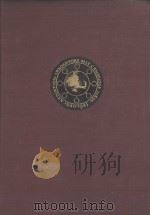
CHAP.1. INTRODUCTION1
SCOPE AND VIEWPOINT1
1.1. Viewpoint1
1.2. Relation to Preceding Books3
1.3. Content of This Volume4
1.4. Relation to the Succeeding Volumes5
1.5. Method of Treatment6
1.6. Uses of Waveforms7
BASIC CONCEPTS AND THE METHOD OF APPROACH8
1.7. Basic Concepts8
1.8. Method of Approach15
CHAP. 2. OPERATIONS ON WAVEFORMS WITH LINEAR CIRCUIT ELEMENTS17
2.1. Linear Circuit Elements17
2.2. Potential Division and Addition18
2.3. Waveform Shaping by Passive Elements19
2.4. Linear Amplifiers Using Negative Feedback24
2.5. Plate-to-grid Feedback Amplifiers27
2.6. Linear Shaping Amplifiers, Capacitance Feedback31
2.7. The Use of Operational Notation37
CHAP. 3. OPERATIONS WITH NONLINEAR CIRCUIT ELEMENTS40
INTRODUCTION40
3.1. Ideal Elements41
3.2. Basic Operations42
OPERATIONS WITH NONLINEAR CIRCUIT ELEMENTS43
3.3. Initiation of Waveforms43
3.4. Amplitude Selection44
3.5. Amplitude Comparison45
3.6. Time Selection47
3.7. Amplitude Modulation49
3.8. Time Modulation52
3.9. Phase Modulation53
3.10. Amplitude Demodulation53
3.11. Level-setting54
3.12. Time Demodulation55
3.13. Amplitude Discrimination57
CHARACTERISTICS OF NONLINEAR CIRCUIT ELEMENTS58
3.14. High-vacuum Diode58
3.15. Contact Rectifiers68
3.16. Photocells72
3.17. Cutoff in Grid Tubes73
3.18. Plate-voltage vs. Plate-current Nonlinearities77
3.19. Grid-current Nonlinearities80
3.20. Composite Characteristics81
3.21. Gas-filled Tubes82
3.22. Feedback Circuits85
3.23. Multiple Circuits86
3.24. Multivariable Elements87
3.25. Curved Characteristics91
3.26. Displacement Elements92
3.27. More Complete Descriptions of Physical Elements92
CHAP. 4. SINUSOIDAL WAVEFORM GENERATORS101
CONTINUOUS WAVES101
4.1. General Properties101
4.2. Resonant-circuit Oscillators104
4.3. Crystal Oscillators106
4.4. Phase-shift Oscillators110
4.5. Bridge Oscillators115
4.6. Negative-resistance Oscillators123
4.7. Beat-frequency Oscillators124
4.8. Electromechanical Sine-wave Generators125
STABILIZATION OF OSCILLATORS126
4.9. Amplitude Stabilization126
4.10. Frequency Stabilization128
POLYPHASE SINUSOIDS131
4.11. Generation of Circular Sweep for Cathode-ray Tube132
4.12. Resistance-reactance Phase Shifters136
PULSED OSCILLATIONS140
4.13. Ringing Circuit141
4.14. Pulsed Hartley Oscillator142
4.15. Pulsed Crystal Oscillators145
PULSED POLYPHASE SINUSOIDS148
4.16. RC-Feedback Circuit150
4.17. Phase-splitting Amplifier154
4.18. Pulsed Oscillations for Use with Synchros156
CHAP.5. GENERATION OF FAST WAVEFORMS159
INTRODUCTION159
5.1. Methods and Principles in the Generation of Fast Waveforms159
5.2. Applications161
5.3. Other Practical Design Considerations162
MULTIVIBRATORS163
5.4. Bistable Multivibrators164
5.5. Monostable Multivibrators166
5.6. Astable Multivibrators171
5.7. Analysis of the Transition between States174
5.8. Analysis of the Timing Process177
5.9. Obtaining Fast Transition179
5.10. Monostable Circuits for Very Short Pulses179
5.11. Obtaining Fast Recovery—Highly Unsymmetrical Astable Multi-vibrators183
5.12. Triggering and Synchronization187
5.13. Stabilizing the Duration of a Quasi-stable State190
5.14. Varying the Duration of a Quasi-stable State194
PHANTASTRON-TYPE CIRCUITS195
5.15. Introduction: Miller Sweep Generation195
5.16. The Screen-coupled Phantastron197
5.17. The Sanatron and Sanaphant200
5.18. The Cathode-coupled Phantastron203
CHAP. 6. BLOCKING OSCILLATORS AND DELAY-LINE PULSE GEN-ERATORS205
6.1. Blocking Oscillators205
PULSE WAVEFORMS211
6.2. The Transformer211
6.3. The Tube213
TRIGGERING METHODS218
6.4. Introduction218
RECOVERY TIME223
6.5. General Considerations223
6.6. Frequency Division225
6.7. Random Variations in PRF225
PRACTICAL CIRCUITS226
6.8. General Considerations226
6.9. Plate-to-grid Feedback226
6.10. Some Applications of Blocking Oscillators233
6.11. Delay-line Pulse Generators238
6.12. Use of a Delay Line in Terminating a Step Function238
6.13. Feedback Networks242
6.14. Delay Line Used to Terminate Regenerative Action245
6.15. Duplication of Pulses by Means of Delay Lines247
CHAP. 7. GENERATION OF TRIANGULAR WAVEFORMS254
GENERAL CONSIDERATIONS254
7.1. Definition and Types254
7.2. Characteristics of Triangular Waveforms255
7.3. Uses of Triangular Waveforms257
7.4. Methods of Generating Triangular Waveforms257
DETAILED DISCUSSIONS OF METHODS OF GENERATION259
7.5. Condenser Charging through Resistor259
Use of High Variational Impedance261
7.6. Inductance in Series with Resistor261
7.7. Vacuum-tube Variational Impedances264
Circuits Involving Positive and Negative Feedback266
7.8. Use of the Cathode Follower267
7.9. A Cathode-follower Circuit with a Compensating Network274
Circuits Involving Negative Feedback278
7.10. General Theory and Classification278
7.11. Single-stage Amplifier Circuits, Externally Gated280
7.12. Multistage Amplifier Circuits, Externally Gated284
7.13. Internally Gated Circuits285
CHAP. 8. GENERATION OF SPECIAL WAVEFORMS289
8.1. Introduction289
8.2. Special Triangles and Rectangles290
8.3. Trapezoids297
8.4. Exponentials297
8.5. Hyperbolas301
8.6. Hyperbolic Waveforms by Algebraic Operations; by Charge Compensation302
8.7. Hyperbolic Waveforms by Summing Exponentials304
8.8. Parabolas305
8.9. Higher Powers and Series Approximations312
8.10. The Sums of Sinusoids313
8.11. Pulse Shaping313
8.12. Approximation of Curves by Segments315
SPECIAL CURRENT WAVEFORMS317
Introduction317
8.13. Derivation of a Current Waveform from a Voltage Waveform317
8.14. Current-waveform Generators318
8.15. Level-setting of Current Waveforms321
CHAP. 9. AMPLITUDE, SELECTION, COMPARISON AND DISCRIMI-NATION325
9.1. Introduction325
9.2. Amplitude Selection325
9.3. Diode Selectors328
9.4. Germanium-crystal Selectors331
9.5. Triode and Pentode Selectors331
9.6. Compensation of Cathode Drifts333
9.7. Quasi Selectors334
9.8. Amplitude Comparison335
9.9. Amplifiers for Comparators335
9.10. Simple Diode Comparator338
9.11. Grid-controlled Comparators339
9.12. Multivibrator Comparators341
9.13. Blocking-oscillator Comparator342
9.14. The Multiar343
9.15. Other Forms of the Multiar344
9.16. Two-way Comparators348
9.17. Sine-wave Comparators348
9.18. Sine-wave Peak Comparison350
9.19. Sine-wave Zero Comparison352
9.20. Sine-wave-comparator Amplifiers355
9.21. Amplitude Discrimination357
9.22. Direct-coupled Discriminators358
9.23. Modulated-carrier-amplitude Discriminators362
CHAP. 10. TIME SELECTION364
10.1. Introduction364
10.2. Amplitude Selectors365
10.3. Switch Circuits370
10.4. Multiple-coincidence Circuits381
10.5. Adjacent Time Selectors384
10.6. Cathode-ray-tube Displays387
CHAP. 11. ELECTRICAL AMPLITUDE MODULATION389
11.1. Introduction389
11.2. Signal-controlled Amplitude Selectors390
11.3. Carrier-controlled Switches396
11.4. Balanced Triodes, Tetrodes, and Multigrid Tubes413
11.5. Variable-capacitance Modulators418
11.6. Negative-feedback Diode Modulator420
11.7. Modulation with Nonlinear Magnetic Circuits421
11.8. Summary425
CHAP. 12. ELECTROMECHANICAL MODULATORS427
12.1. Introduction427
POTENTIOMETERS428
12.2. Fundamental Characteristics428
12.3. Linear Potentiometers431
12.4. Sinusoidal Potentiometers434
12.5. Nonlinear Potentiometers436
12.6. Synchros439
12.7. Use with Sinusoidal Carriers444
12.8. Complex-voltage-waveform Modulation—The Problem447
12.9. Complex-current-waveform Modulation450
12.10. Variable Condensers455
12.11. Use with Sinusoidal Carrier457
12.12. Complex-waveform Modulation461
12.13. Variacs463
12.14. Photomechanical Modulators463
CHAP. 13. TIME MODULATION466
13.1. Introductory Remarks466
GENERAL PROPERTIES OF T-M WAVEFORMS466
13.2. Examples of T-m Waveforms466
13.3. Fundamental T-m Methods467
13.4. Applications469
13.5. Transfer Functions—Linear and Nonlinear470
13.6. Control Signals471
13.7. Errors—General Accuracy Considerations472
VOLTAGE SAWTOOTH METHOD477
13.8. Introduction477
13.9. Representative Circuit. Switching and Comparison Methods477
13.10. Problems with Miller Negative-going Sweeps483
13.11. Slow and Nonlinear Sweeps—Regenerative Pickoffs485
13.12. Internally Gated Circuits486
PHASE-MODULATION METHOD490
13.13. Introduction490
13.14. Phase-modulating Potentiometer491
13.15. Phase-shifting Condensers492
13.16. Synchro Phase-modulators497
STORAGE TUBE METHOD499
13.17. Storage Tubes499
CHAP. 14. AMPLITUDE AND TIME DEMODULATION501
14.1. Introduction501
14.2. Types of Amplitude Demodulation502
14.3. Amplitude Selectors503
14.4. Phase-sensitive Detectors511
14.5. Demodulators Employing Switching513
14.6. Difference Detectors with Constant Output524
14.7. General Considerations in Time Demodulation532
14.8. Simplified Negative-feedback Time Demodulator537
14.9. Mechanical Demodulation by Cathode-ray-tube Display539
14.10. Amplitude Demodulation by Electronic Servomechanisms543
CHAP. 15. SINUSOIDAL FREQUENCY MULTIPLIERS AND DIVIDERS545
SINUSOIDAL FREQUENCY MULTIPLIERS545
15.1. Introduction545
15.2. Harmonic Generation546
15.3. Frequency-selecting Filters548
Frequency Multipliers551
15.4.. Practical Multiplier Circuits551
SINUSOIDAL FREQUENCY DIVIDERS556
15.5. Introduction556
15.6. Dividers Using a Time Base559
15.7. Regenerative Dividers560
15.8. Dividers with Regeneration and Modulation562
CHAP. 16. PULSE-RECURRENCE-FREQUENCY DIVISION567
GENERAL CONSIDERATIONS567
16.1. Definition567
16.2. Characteristics of Pulse-recurrence-frequency Dividers567
16.3. Uses of Pulse-recurrence-frequency Dividers568
16.4. Methods for Accomplishing Continuous Pulse-recurrence-fre-quency Division569
SOME FUNDAMENTAL CIRCUITS AS CONTINUOUS FREQUENCY DIVIDERS572
16.5. Monostable Multivibrators572
16.6. Astable Multivibrator Dividers575
16.7. Phantastron-type Dividers577
16.8. Blocking Oscillator Dividers582
16.9. Blocking Oscillators in Divider Chains588
16.10. Gas-tube Dividers591
MORE ELABORATE DIVIDER SCHEMES, AND INTERMITTENT-FREQUENCY DIVISION592
16.11. Pulse-selection PRF Dividers592
16.12. Frequency Division Using Resonant Stabilization595
16.13. Divider Chains with Feedback599
16.14. Intermittent Pulse-recurrence-frequency Division600
CHAP. 17. COUNTING602
INTRODUCTION602
17.1. The Problem602
17.2. General Method602
SEQUENCE CIRCUITS604
17.3. Scale-of-two604
17.4. Thyratron Ring Counters612
ENERGY STORAGE COUNTERS614
17.5. General Considerations614
17.6. Storage Circuits615
17.7. Energy-storage Counter Circuits619
17.8. Combination of Counters624
CHAP. 18. MATHEMATICAL OPERATIONS ON WAVEFORMS—Ⅰ629
ADDITION AND SUBTRACTION OF VOLTAGES AND CURRENTS629
18.1. General Considerations629
18.2. Linear Passive Networks632
18.3. Addition and Subtraction by Means of Vacuum Tubes640
18.4. Summary647
DIFFERENTIATION AND INTEGRATION648
18.5. Methods of Differentiation and Integration608
18.6. Theoretical Approaches654
18.7. Practical Circuits658
CHAP. 19. MATHEMATICAL OPERATIONS ON WAVEFORMS—Ⅱ667
19.1. Introduction667
MULTIPLICATION AND DIVISION668
19.2. Relation of Multiplication to Other Operations668
19.3. Multipliers Using Tube Characteristics669
19.4. Logarithmic Devices670
19.5. Multiplying Devices Using Carrier Waveforms674
SQUARES AND SQUARE ROOTS678
19.6. Circuits for Producing Squares and Square Roots678
19.7. Squaring Circuits679
19.8. Square-root-extracting Circuits686
19.9. Other Quadratic Elements691
19.10. Testing of Circuits Producing Squares and Square Roots693
CHAP. 20. OSCILLOSCOPIC TECHNIQUES IN WAVEFORM MEASURE-MENT694
20.1. Introduction694
20.2. Oscilloscopes and Meters694
20.3. Amplitude Measurements695
20.4. Time Measurements697
20.5. Waveform Measurements699
20.6. Frequency Measurements702
20.7. Phase Measurements705
20.8. Impedance Measurements706
20.9. Harmonic Distortion in Pulsed Sinusoids706
CHAP. 21. STORAGE TUBES707
INTRODUCTION707
21.1. General Definition of a Storage Tube707
21.2. General Methods, Applications707
21.3. Theory of Storage Action708
21.4. Deflection Modulation713
21.5. Signal-plate Modulation714
21.6. Focus Modulation716
21.7. Frequency-modulated Carrier with Intensity Modulation716
DESCRIPTION OF APPARATUS USED IN STORAGE-TUBE EXPERIMENTS717
21.8. Intensity Modulation Tests717
21.9. Deflection Modulation Tests722
20.10. Storage-tube Synchronizing Devices727
21.11. Storage-tube Time Demodulator728
CHAP.22. ELECTRICAL DELAY LINES730
22.1. Introduction730
THEORY OF ELECTRICAL DELAY LINES731
22.2. Propagation Function and Characteristic-impedance Function731
Response of Networks with Particular γ and Z0 Functions732
22.3. Ideal Transmission Network and Distortion732
22.4. Amplitude Distortion733
22.5. Phase Distortion735
22.6. Amplitude and Phase Distortion739
22.7. Reflection742
TYPES OF DELAY LINES742
22.8. Lumped-constant Lines743
22.9. Distributed-constant Lines745
22.10. Correction Methods746
USES OF DELAY LINES747
22.11. Synchronization and Generation of Waveforms747
22.12. High-impedance Cable748
MEASUREMENT OF PROPERTIES OF DELAY LINES749
22.13. Attenuation Function γ1749
22.14. Phase Function γ2749
22.15. Characteristic Impedance750
CHAP. 23. SUPERSONIC DELAY DEVICE751
23.1. Introduction751
THEORY OF SUPERSONIC DELAY DEVICE752
23.2. The Quartz Crystal as an Electromechanical Transducer752
23.3. Acoustical Media755
23.4. Radiation and Propagation757
23.5. Some Special Cases of Transducer Equivalent Circuits and Asso-ciated Electrical Circuits759
SOME EXAMPLES OF DELAY LINES752
23.6. “Trigger” Delays762
23.7. Delay Lines Providing Faithful Reproduction763
BIBLIOGRAPHY764
APPENDIX A: Negative-capacity Amplifier767
APPENDIX B: Cathode-compensated Amplifier771
GLOSSARY775
INDEX777
1949《waveforms 19》由于是年代较久的资料都绝版了,几乎不可能购买到实物。如果大家为了学习确实需要,可向博主求助其电子版PDF文件(由chance B 1949 mcgraw-hill book co 出版的版本) 。对合法合规的求助,我会当即受理并将下载地址发送给你。
高度相关资料
-
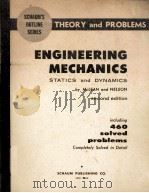
- SCHAUM‘S OUTLINE OF THEORY AND PROBLEMS OF ENGINEERING MECHANICS STATICS AND DYNAMICS SECOND EDITION
- 1962 SCHAUM PUBLISHING
-

- 滇系 19
- 1887
-

- 前汉书 卷19上-19下
- 北京:中华书局
-

- 明史 19
- 1974
提示:百度云已更名为百度网盘(百度盘),天翼云盘、微盘下载地址……暂未提供。➥ PDF文字可复制化或转WORD
